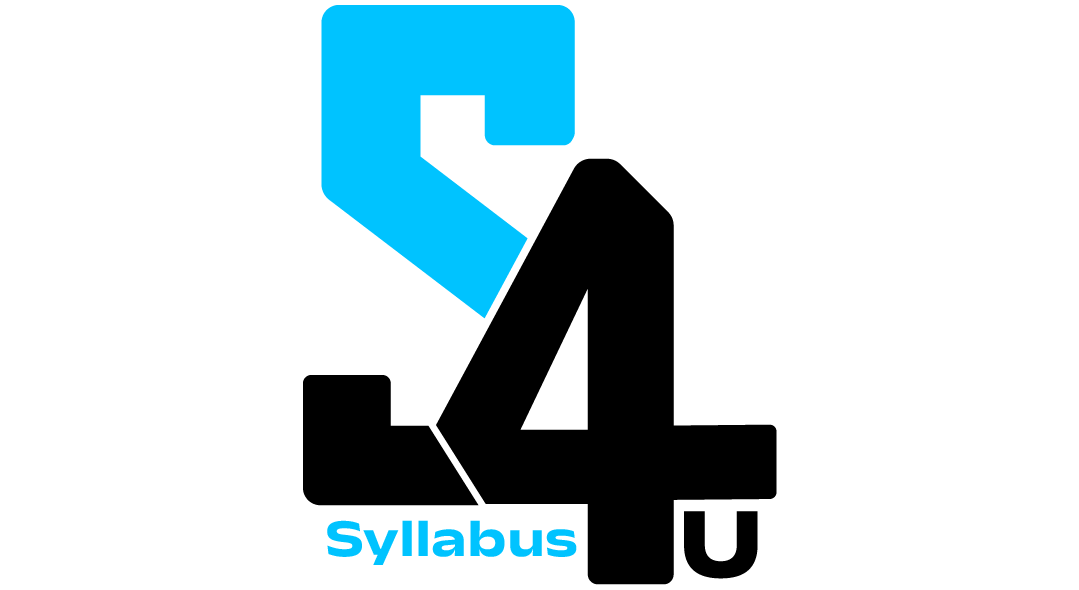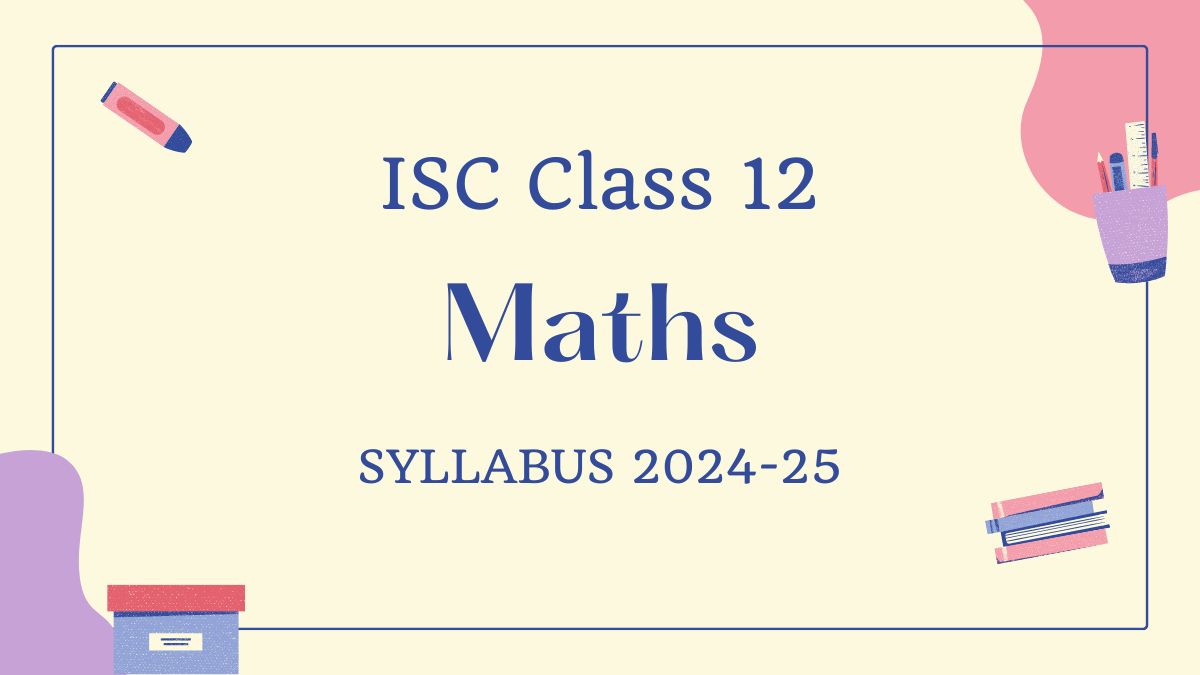ISC Class 12 Maths Syllabus 2024-25
The ISC Class 12 Maths Syllabus for the academic year 2024-25 has been divided into two papers: Paper I (Theory) and Paper II (Project Work). Paper I is a theory exam worth 80 marks, and Paper II is project work worth 20 marks. The theory paper is divided into three sections: A, B, and C. Section A is compulsory for all students, while candidates have a choice between attempting questions from either Section B or Section C. This syllabus provides a balanced blend of algebra, calculus, probability, and other mathematical concepts, designed to enhance both problem-solving skills and real-world applications.
The ISC Class 12 Maths Syllabus for 2024-25 is divided into two papers:
Paper I: Theory (3 hours, 80 marks)
Paper II: Project Work (20 marks)
Paper I (Theory) – 80 Marks
The syllabus is divided into three sections:
- Section A (Compulsory)
- Section B (Choice between B or C)
- Section C (Choice between B or C)
Marks Distribution for Paper I (Theory):
| Section A (Compulsory) | Total Marks: 65 |
|---|---|
| Relations and Functions | 10 Marks |
| Algebra | 10 Marks |
| Calculus | 32 Marks |
| Probability | 13 Marks |
| Section B (Optional) | Total Marks: 15 |
|---|---|
| Vectors | 5 Marks |
| Three-Dimensional Geometry | 6 Marks |
| Applications of Integrals | 4 Marks |
| Section C (Optional) | Total Marks: 15 |
|---|---|
| Application of Calculus | 5 Marks |
| Linear Regression | 6 Marks |
| Linear Programming | 4 Marks |
Detailed Syllabus for Paper I
Section A (Compulsory) – 65 Marks
- Relations and Functions
- Types of relations: reflexive, symmetric, transitive, and equivalence relations.
- One-to-one and onto functions, inverse of a function.
- Inverse trigonometric functions: definition, domain, range, and elementary properties.
- Algebra
- Matrices: Concept, types, operations, and inverse of matrices.
- Determinants: Properties, minors, cofactors, and applications in solving systems of linear equations.
- Calculus
- Continuity and Differentiability: Concepts, derivatives of various functions, logarithmic differentiation, and second-order derivatives.
- Applications of Derivatives: Rate of change, increasing/decreasing functions, tangents, normals, maxima, and minima.
- Integrals: Basic properties, methods of integration, and applications of definite integrals.
- Differential Equations: Formation, order, degree, and methods of solving differential equations.
- Probability
- Conditional probability, multiplication theorem, independent events, Bayes’ theorem, and random variables.
Section B (Optional) – 15 Marks
- Vectors
- Magnitude and direction, addition, scalar and vector products, and geometrical applications.
- Three-Dimensional Geometry
- Cartesian and vector equations of lines and planes, angles between them, and shortest distances.
- Applications of Integrals
- Area bounded by curves, lines, and coordinate axes.
Section C (Optional) – 15 Marks
- Applications of Calculus in Commerce and Economics
- Cost, revenue, and profit functions, and their interpretation using maxima and minima.
- Linear Regression
- Lines of regression, scatter diagrams, method of least squares, and estimation using regression lines.
- Linear Programming
- Formulation of L.P. problems, graphical solutions, and feasible solutions.
Paper II (Project Work) – 20 Marks
Students are required to complete two projects:
- One from Section A
- One from either Section B or Section C
The project work is assessed by the subject teacher and a visiting examiner. Marks distribution for each project is as follows:
| Criteria | Marks |
|---|---|
| Overall Format | 1 mark |
| Content | 4 marks |
| Findings | 2 marks |
| Viva-voce | 3 marks |
| Total | 10 marks |
Suggested Assignments for Project Work
Section A:
- Graphically demonstrate a function that is one-to-one but not onto.
- Explore the principal value of inverse trigonometric functions using a unit circle.
- Find derivatives of a determinant and verify them by different methods.
- Verify the consistency of a system of linear equations graphically.
Section B:
- Use vector algebra to find the area of a parallelogram or triangle.
- Prove trigonometric identities like the sine and cosine rules using vectors.
- Derive and explain the scalar triple product.
Section C:
- Draw graphs of cost, revenue, and profit functions, and use calculus to find maxima and minima.
- Use real data to find regression equations and estimate values using regression lines.
- Solve linear programming problems to find minimum costs and optimal solutions.
ISC Class 12 Maths Syllabus 2024-25 PDF Download
Students can easily access the ISC Class 12 Maths Syllabus 2024-25 in PDF format for convenient offline use. This PDF includes detailed information on all units, marking schemes, and project guidelines. Having a digital copy allows students to refer to the syllabus at any time, ensuring they stay updated with the course structure and prepare effectively for both the theory exam and project work.
ISC Class 12 Maths Syllabus 2024-25-Click Here To Download PDF
Related Post:
| ISC Class 12 Legal Studies Syllabus | ISC Class 12 Biology Syllabus |
| ISC Class 12 Chemistry Syllabus | ISC Class 12 Physics Syllabus |
| ISC Class 12 Maths Syllabus | ISC Class 12 English Syllabus |

